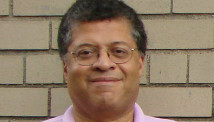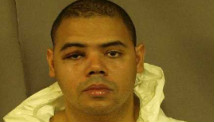STORY HIGHLIGHTS
- NEW: LAPD board found Dorner was facing a bad review
- Chris Dorner filed a complaint against his training officer in 2007
- The LAPD cleared the officer and recommended that Dorner be dismissed
- "The attacks will stop when the department states the truth about my innocence," he wrote
(CNN) -- What authorities are calling Chris Dorner's campaign of guerrilla warfare against his former comrades in the Los Angeles Police Department has its roots in a hotel lobby in San Pedro, the city's port district.
In July 2007, the former Navy officer was an LAPD probationary officer, riding patrol with a veteran of the force, when they were dispatched to check out a report of a disturbance at the DoubleTree Hotel. A man had refused to leave the premises and was sitting on the bench outside the lobby when they arrived.
Christopher Gettler had "a glazed look in his eyes," court documents later recounted, and he refused to get up and speak with police. Dorner and his training officer, Teresa Evans, started to take him into custody, but he refused to comply and took a swing at them.
Gettler's family later told investigators he had a history of mental illness. Dorner wrestled with him, and the two tumbled into a planter in front of the DoubleTree. Evans readied a Taser and warned the man to stop. He submitted only after she shocked him with the electronic device.
That's where the stories start to differ. And those differences led to an investigation by the LAPD's internal affairs unit, Dorner's eventual dismissal from the force and a long court battle to clear his name -- a battle he was losing in California courts.
The LAPD now says Dorner is the subject of a massive manhunt. It accuses him of killing one police officer and wounding two others, as well as killing the daughter of his police union representative and her fiance on Sunday.
In a letter addressed to "America" and provided to CNN by an LAPD source, Dorner threatens to retaliate against officers involved in his case and their families.
"The attacks will stop when the department states the truth about my innocence," he wrote.
Two weeks after that encounter in San Pedro, Dorner went to a sergeant to report that Evans had kicked Gettler after he had given up. The LAPD investigated his complaint and ruled it "unfounded," based on accounts by three hotel employees, in May 2008.
Then the investigators' report turns to Dorner.
"The delay in reporting the alleged misconduct coupled with the witness' statements irreparably destroy Dorner's credibility, and bring into question his suitability for continued employment as a police officer," it states. The report found Dorner had made false statements to a superior while reporting the allegation that Evans had kicked the suspect and to internal affairs investigators looking into the claim.
The report recommended his dismissal, a process that was finalized after a hearing of the department's Board of Rights in January 2009. He sued to have the decision reversed, calling the process a "witch hunt," but lost at the trial court and in a state appellate court.
Dorner argued that the board had ignored evidence from both Gettler and his father, who recounted that his son said at the time that he'd been kicked.
But Gettler's father's statements conflicted with his son's, and Gettler's mental illness "affected his ability to give an accurate account of the incident," as the Court of Appeals of California put it in October 2011. Meanwhile, the board found that Dorner may have had a motive to make a bogus complaint: Evans testified that Dorner "was going to receive an unsatisfactory probationary rating if he did not improve his performance," and the kicks were reported the day after Dorner received an evaluation.
In his letter, Dorner lashes out against the LAPD's history of scandal, writing that things haven't changed "changed since the Rampart and Rodney King days. It has gotten worse."
"I know I will be villified by the LAPD and the media," he wrote. "Unfortunately, this is a necessary evil that I do not enjoy but must partake and complete for substantial change to occur within the LAPD and reclaim my name."
But LAPD Chief Charlie Beck told reporters Thursday afternoon that no apology and exoneration would be forthcoming: "It is not going to happen."
Dorner grew up in southern California and went to high school in the Los Angeles suburb of La Palma, where his mother still lives. A police officer told reporters gathered outside the tan stucco home Thursday afternoon that Dorner's mother had requested they stop knocking on her door.
Next-door neighbor Crystal Lancaster called him "a nice, friendly guy, easy to approach."
"It's a big shock when we heard it," she said. "We all couldn't believe it. We didn't know him that well, but he seemed like a really nice guy."
While in high school, he played football and was part of the police explorer program, said another neighbor, City Councilman Gerard Goedhart.
He went to college at Southern Utah University, where he was a running back on the school's football team and graduated with a degree in political science in 2001, Southern Utah athletic department spokesman Neil Gardner said.
"Chris Dorner is the last person I would ever think would do such," Gardner said Thursday. "He was a great kid."
College classmate James Usera said Dorner called him "out of the blue" four years ago, after not having spoken for several years after graduation. He complained about problems with the LAPD during the call, but Usera didn't recall the details.
"He did seem to be bothered by it or upset by it a bit, but certainly nothing that he said to me struck me as being a concern other than for concern for his employment," Usera told CNN.
He described Dorner as "a perfectly rational human being," "smart and insightful."
"Never anything that I experienced in a million years would lead me to conclude that this horrendous activity that he engaged in at this point was ever imminent or would ever be any type of concern," he added.
Dorner joined the Navy after college, receiving a commission as an ensign in July 2002. He trained in river-warfare units and and served a 2006-2007 stint in Iraq guarding oil platforms, according to Pentagon records. He held a commission as a lieutenant until February 1 and was rated as a rifle marksman and pistol expert, according to the records.
He enrolled in the LAPD Academy in February 2005 and spent four months on the streets as a trainee before being recalled to active duty for his stint in Iraq, police records state. In the end, the LAPD cost him not only his police job but his career in the Navy, he wrote.
"This is my last resort," he wrote. "The LAPD has suppressed the truth, and it has now led to deadly consequences."
CNN's Alan Duke, Mallory Simon and Barbara Starr contributed to this report.













